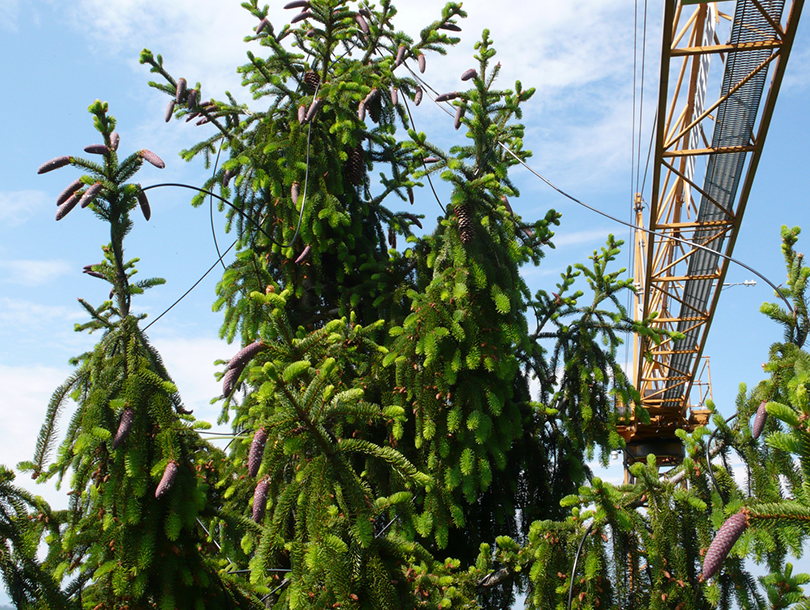Forest Discovery: Trees Trade Carbon Among Each Other
Forest trees use carbon not only for themselves; they also trade large quantities of it with their neighbours. Botanists from the University of Basel report this in the journal Science. The extensive carbon trade among trees – even among different species – is conducted via symbiotic fungi in the soil.
15 April 2016
It is well known that plants take up carbon dioxide from the air by photosynthesis. The resulting sugar is used to build cellulose, wood pulp (lignin), protein and lipid – the building blocks of plants. While growing, the tree transports sugar from its leaves to the building sites: to the branches, stems, roots and to their symbiotic fungi below ground (mycorrhizal fungi).
Carbon dioxide shower for trees
Dr. Tamir Klein and Prof. Christian Körner of the University of Basel together with Dr. Rolf Siegwolf of the Paul Scherrer Institute (PSI) now report, that this sugar export goes further than previously thought. In a forest near Basel the researchers used a construction crane and a network of fine tubes to flood the crowns of 120 year old and 40 meter tall spruce trees with carbon dioxide that carried a label. The researchers used carbon dioxide that, compared to normal air, contains less of the rare and heavier 13C atom.
While this modification made no difference for the trees, it allowed the botanists to track the carbon through the entire tree using an atomic mass spectrometer. This way they were able to trace the path of the carbon taken up by photosynthesis from the crowns down to the root tips. The researchers found the labelled carbon not only in the roots of the marked spruce trees. The roots of the neighbouring trees also showed the same marker, even though they had not received labelled carbon dioxide. This included trees from other species.
“Forest is more than the sum of its trees”
The only way the carbon could have been exchanged from spruce to beech, pine or larch tree – or vice versa – is by the network of tiny fungal filaments of the shared mycorrhizal fungi. Understory plants which partner up with other types of fungi remained entirely unmarked. The research group called the discovered exchange of large quantities of carbon among completely unrelated tree species in a natural forest “a big surprise”.
According to the researchers, the discovery questions the concept of tree individuality with regard to the single largest constituent of the biosphere, tree carbon. Furthermore, the results of the study funded by the Swiss National Science Foundation add a new dimension to the role of mycorrhizal fungi in forests. “Evidently the forest is more than the sum of its trees”, comments Prof. Christian Körner the findings.
Original source
Tamir Klein, Rolf T. W. Siegwolf, Christian Körner
Belowground carbon trade among tall trees in a temperate forest
Science (2016), doi: 10.1126/science.aad6188
Further information
Prof. Christian Körner, University of Basel, Department of Environmental Sciences, Tel. +41 61 267 35 10 and +41 61 267 35 00, email: ch.koerner@unibas.ch
An image suitable for printing with this press release can be found in the media database.



